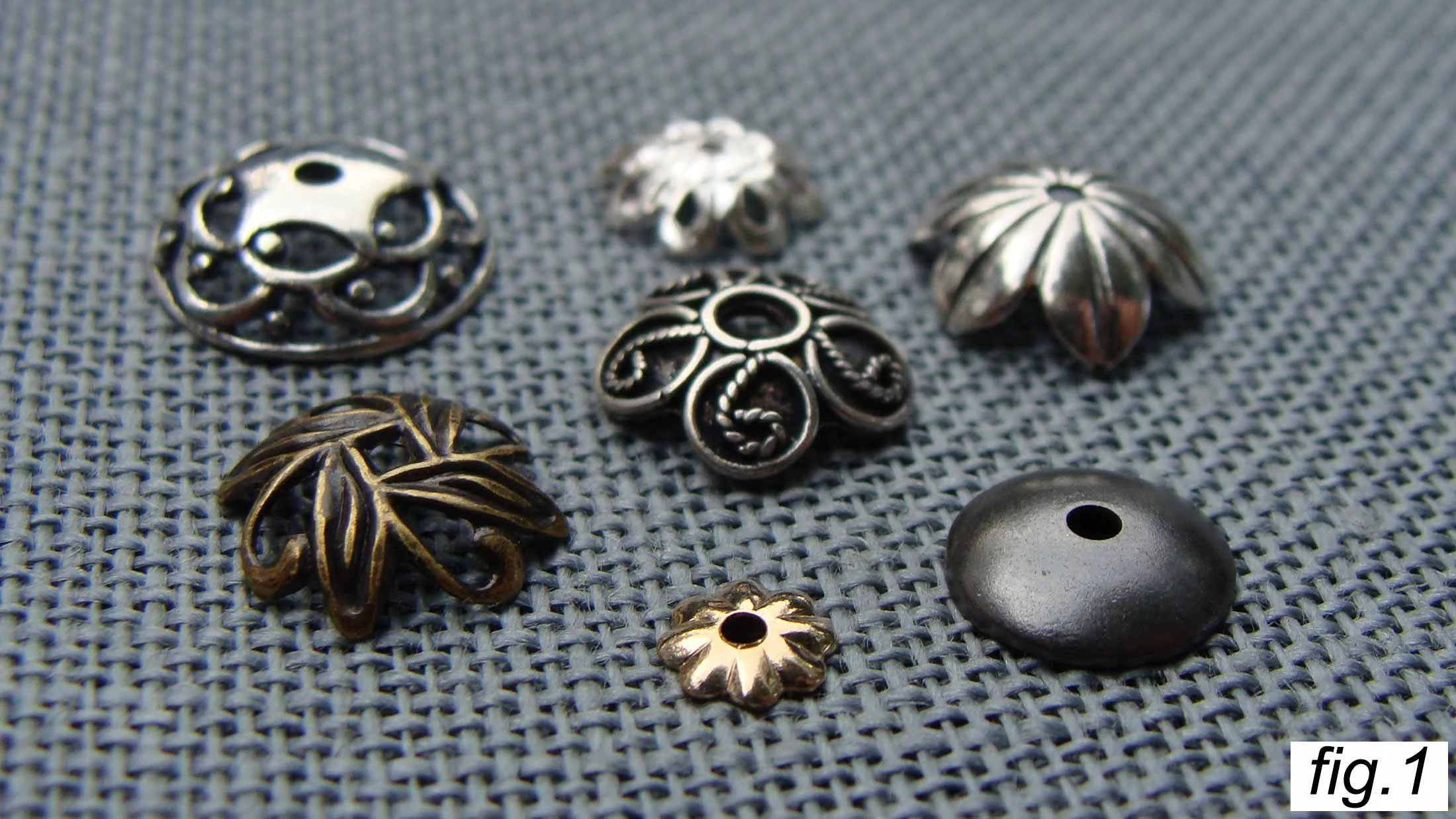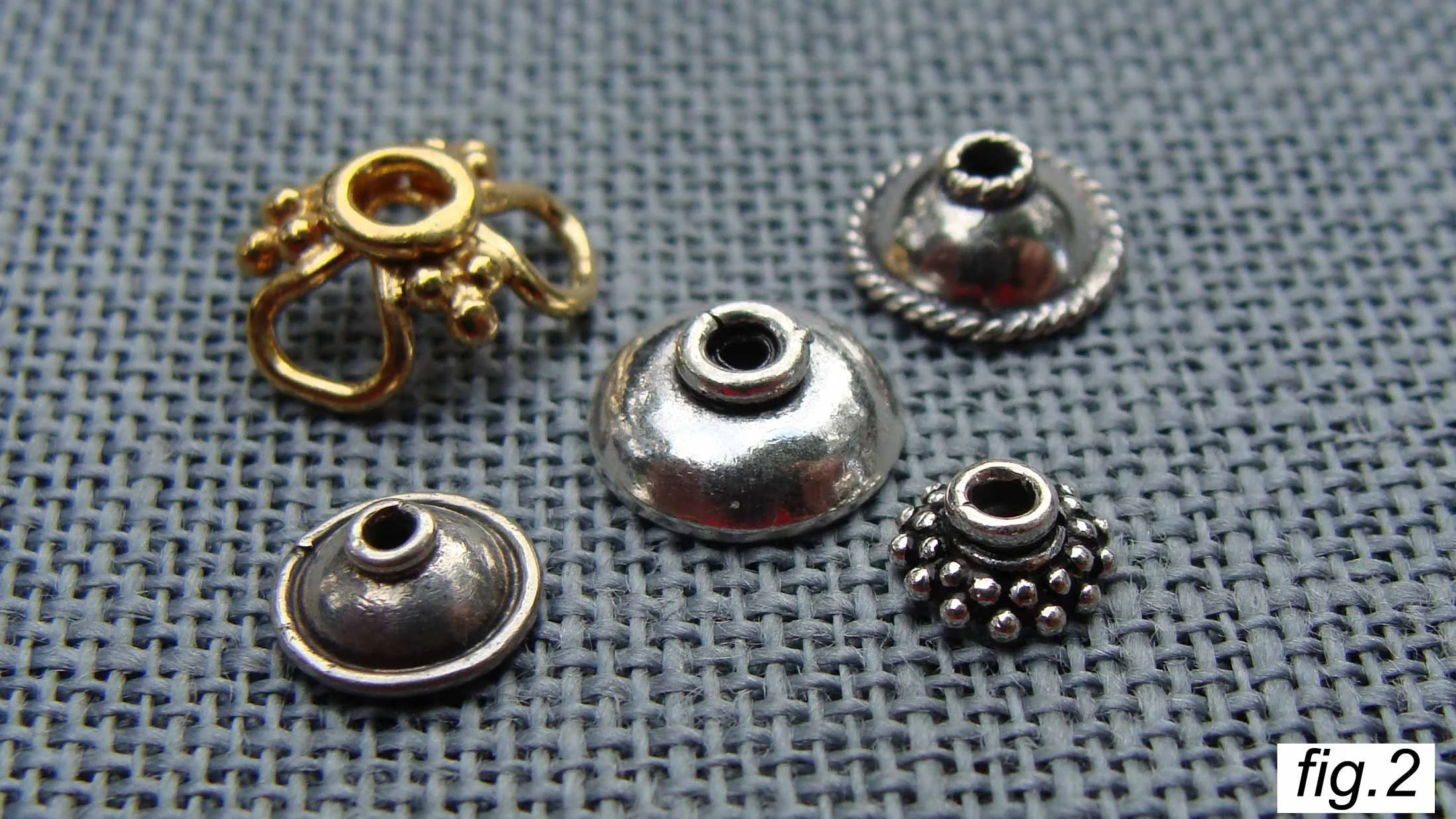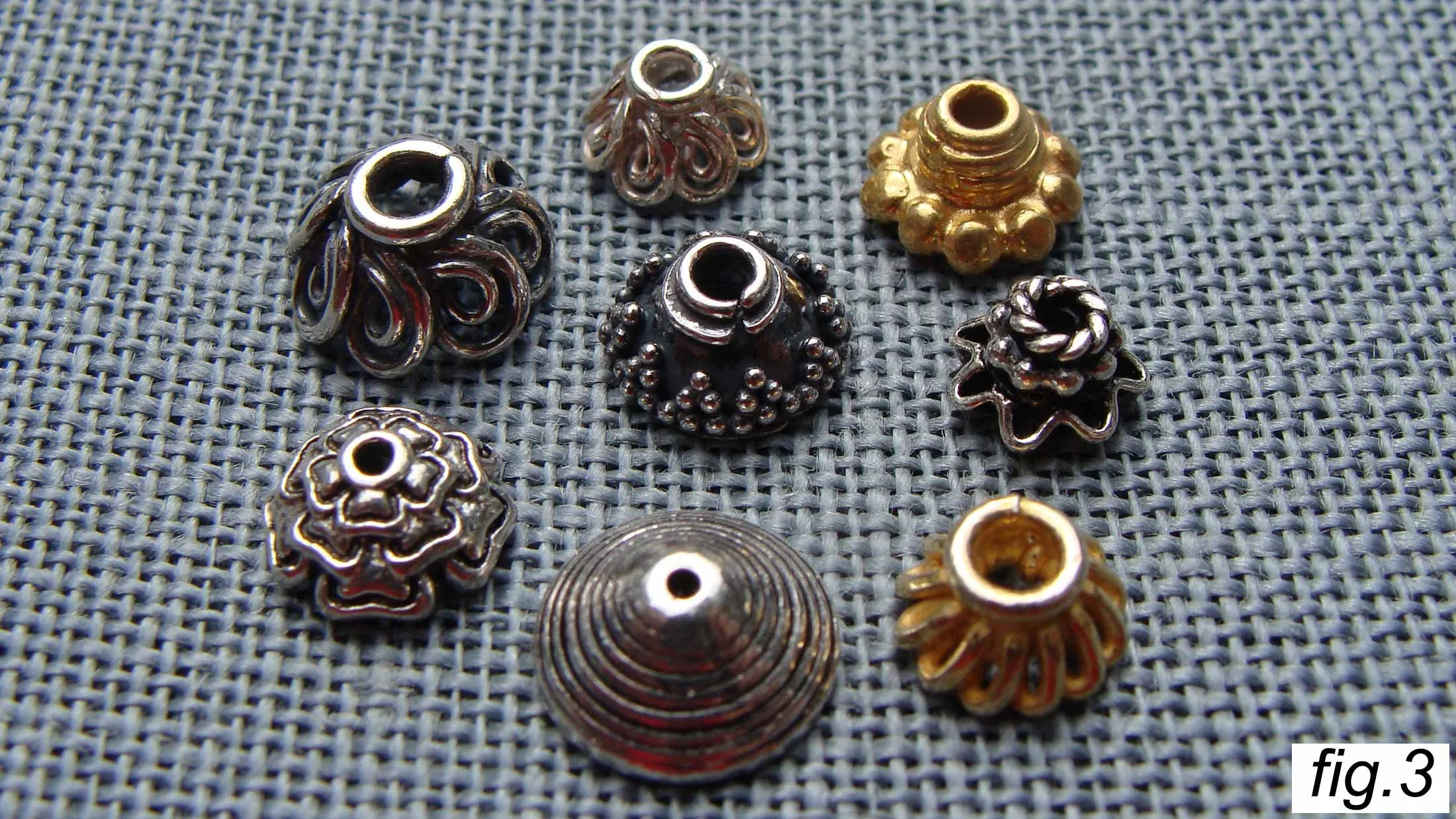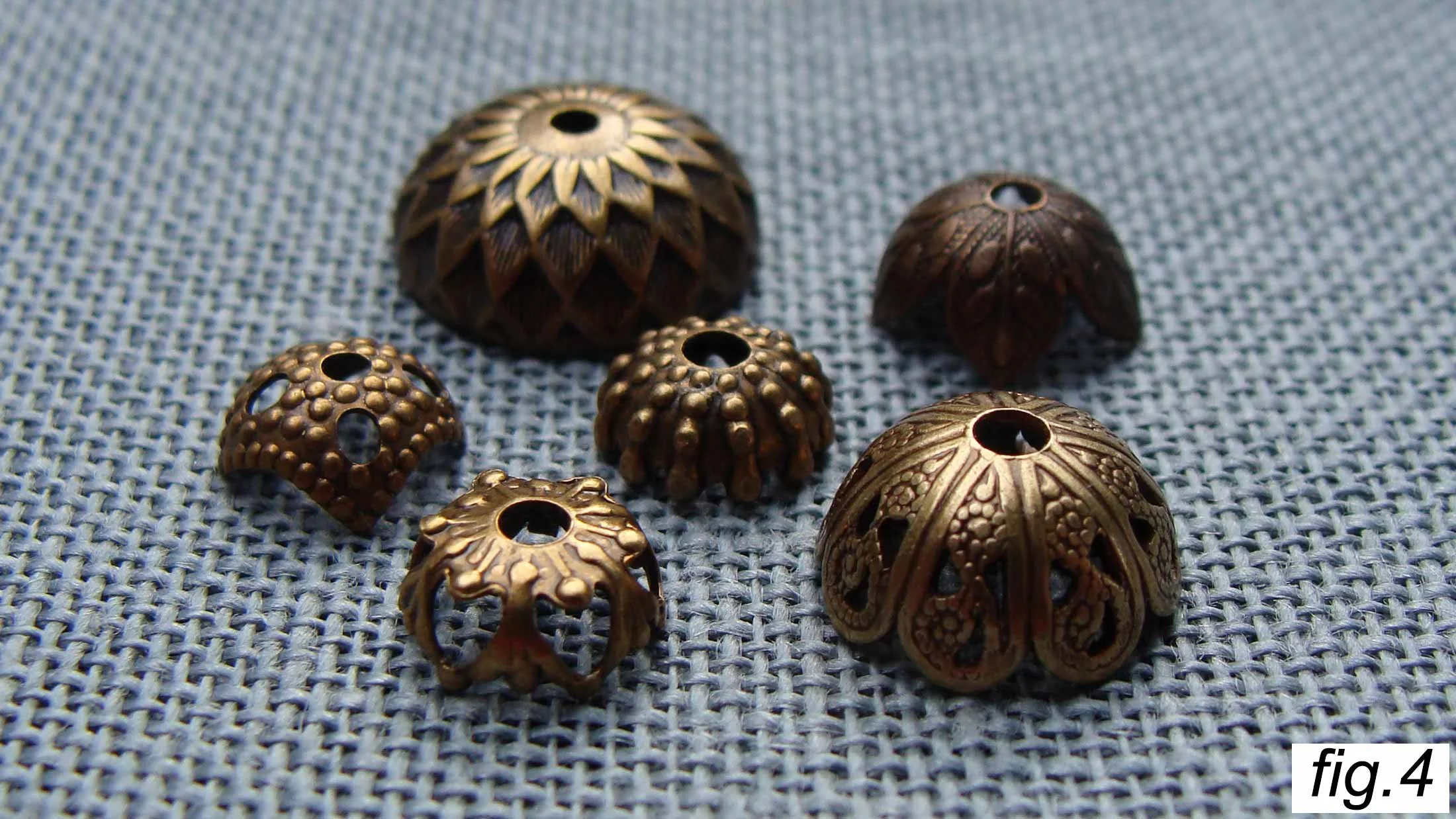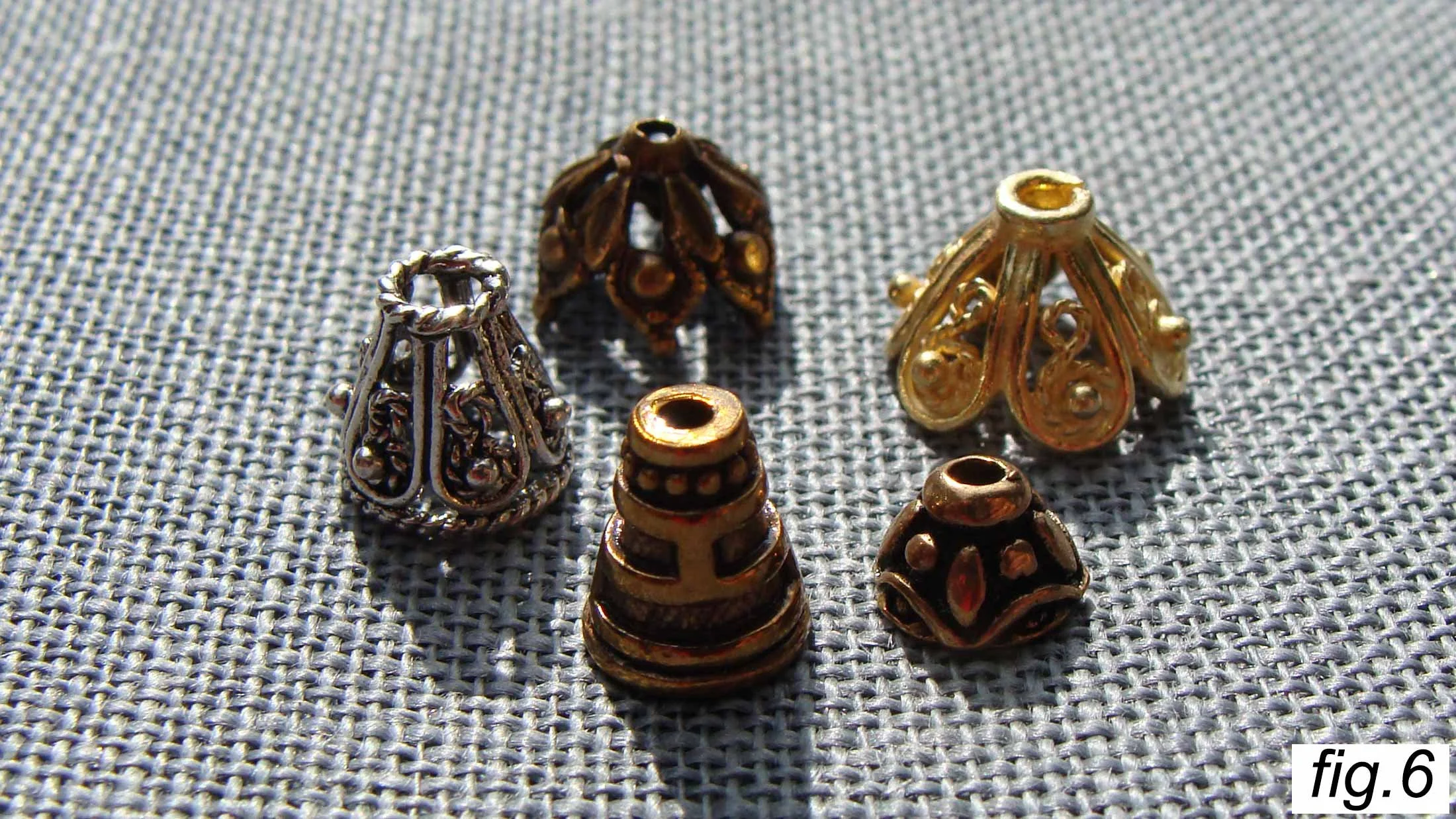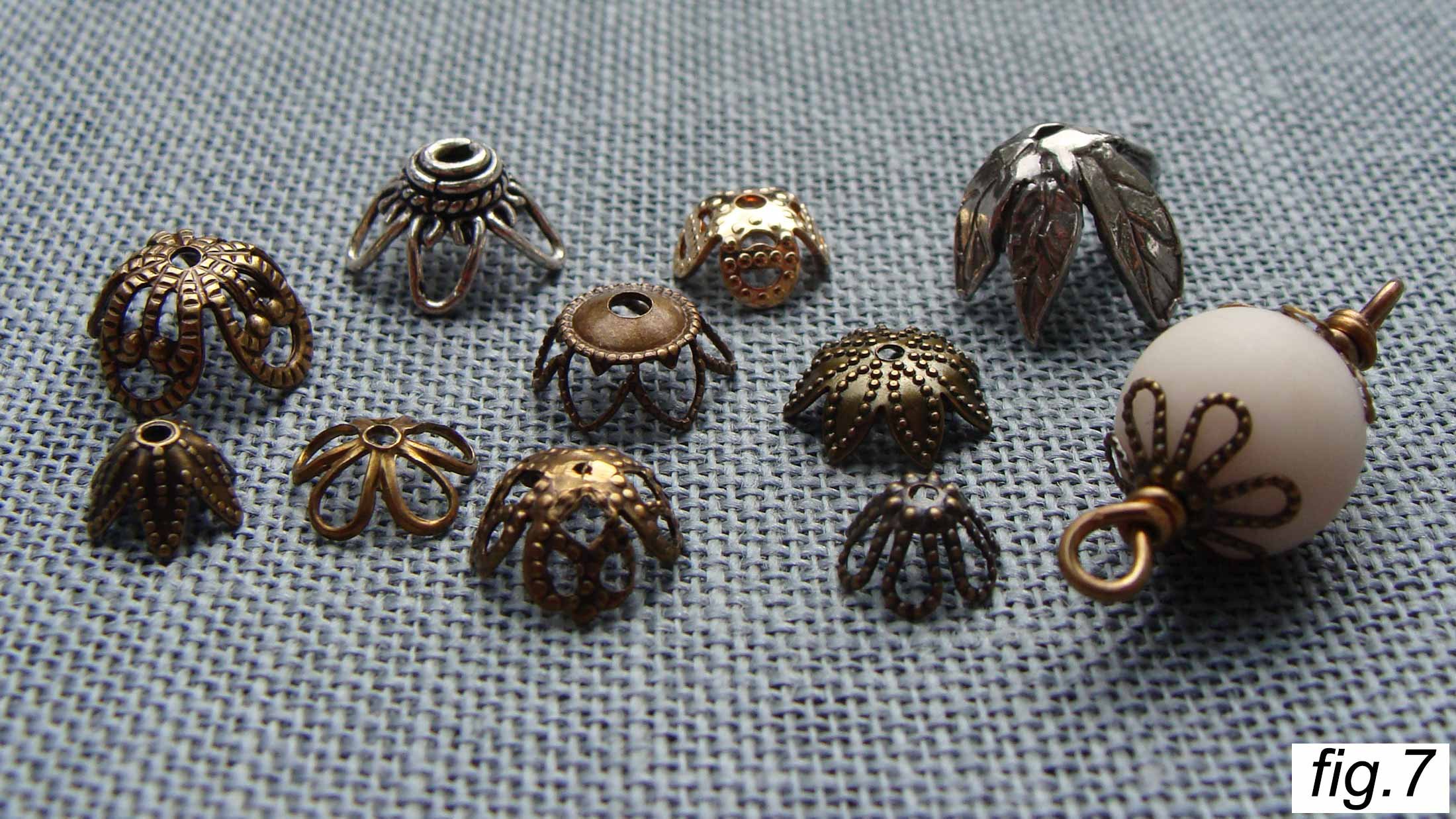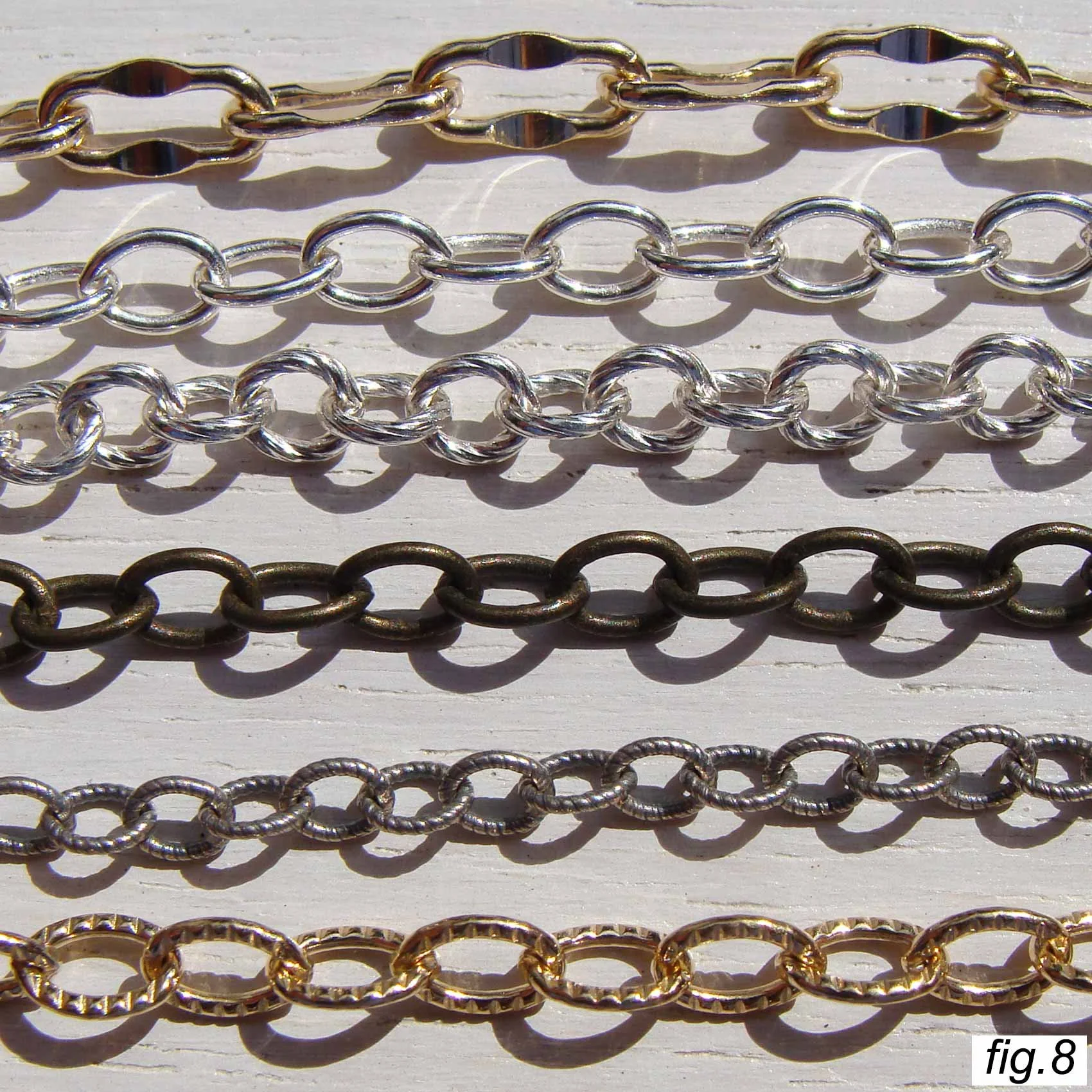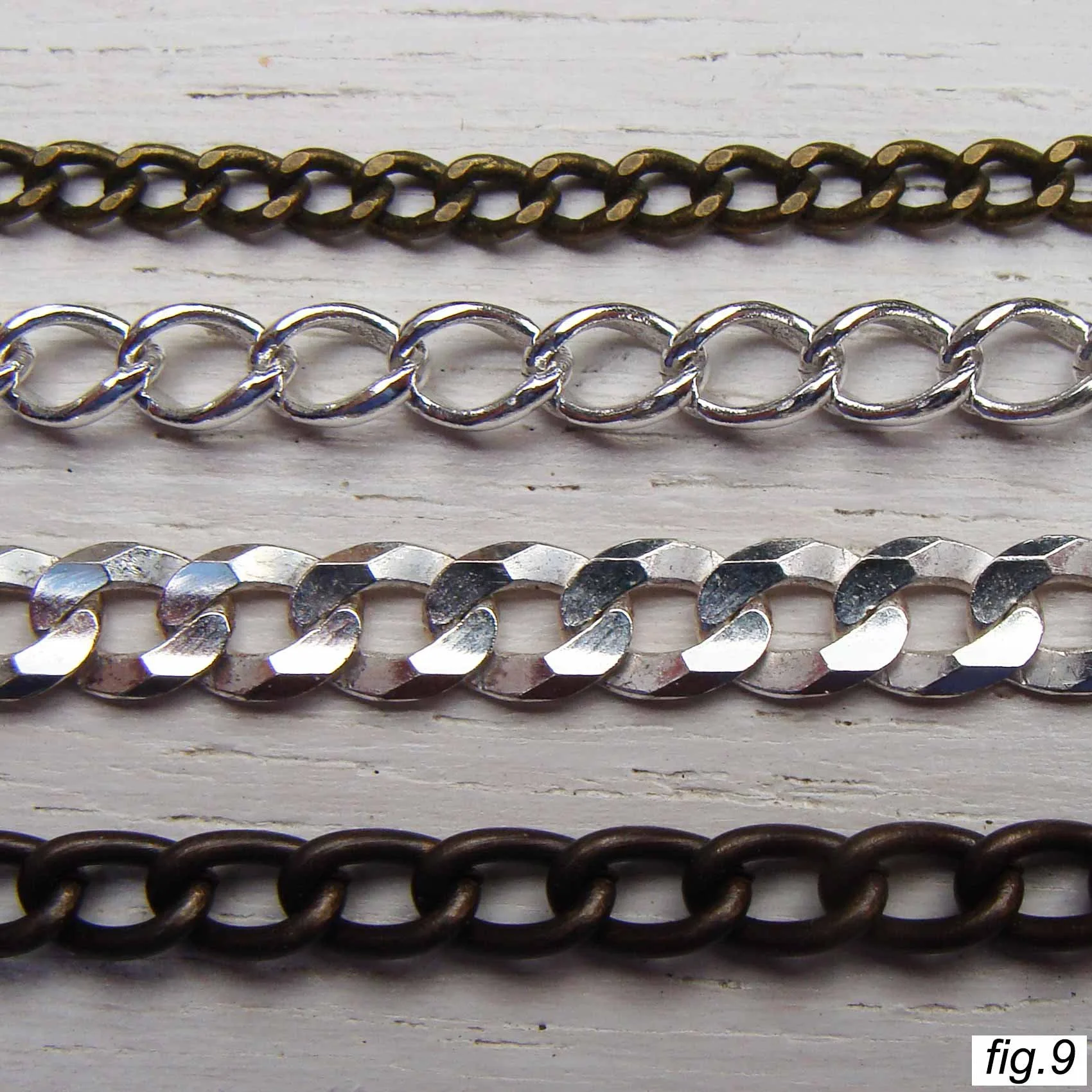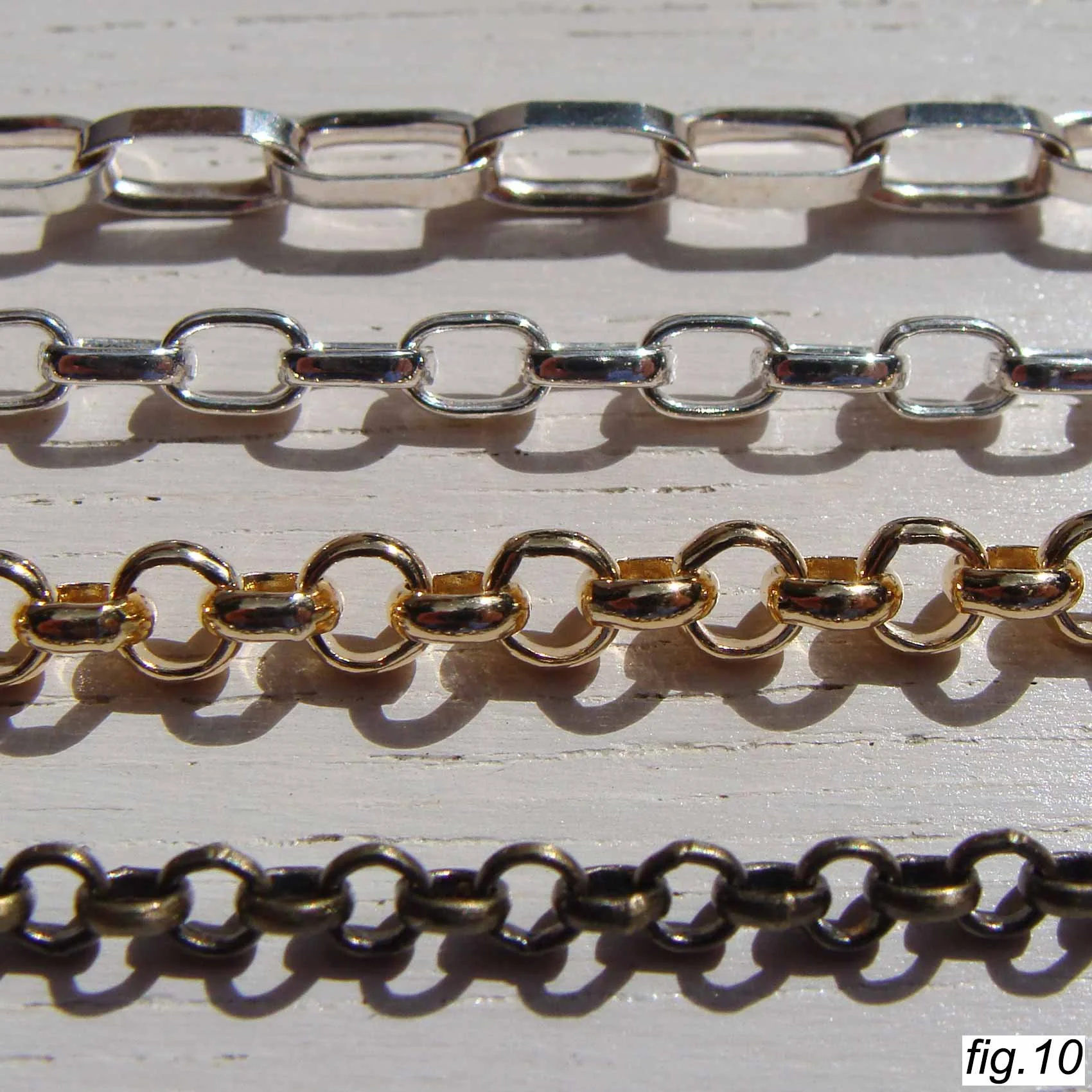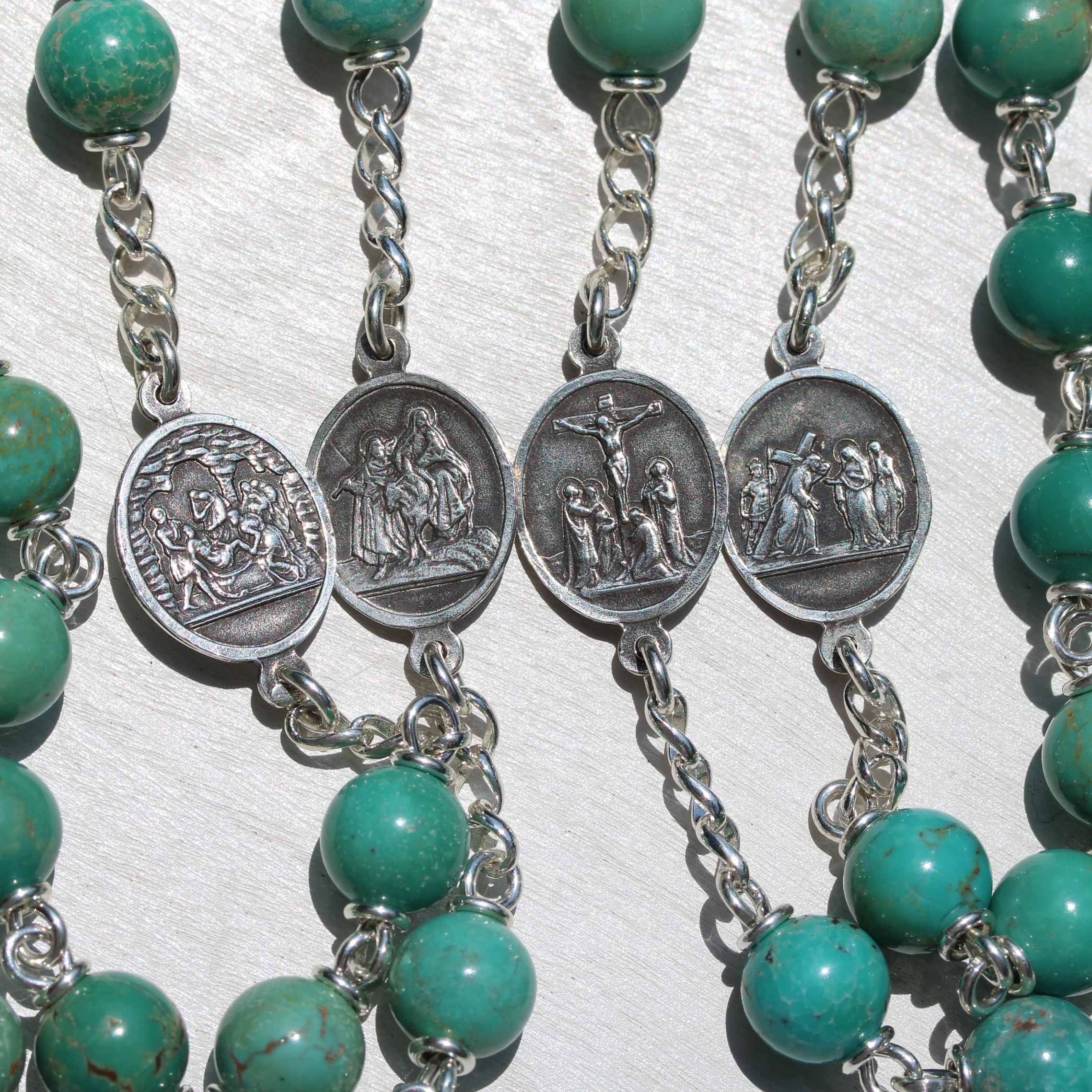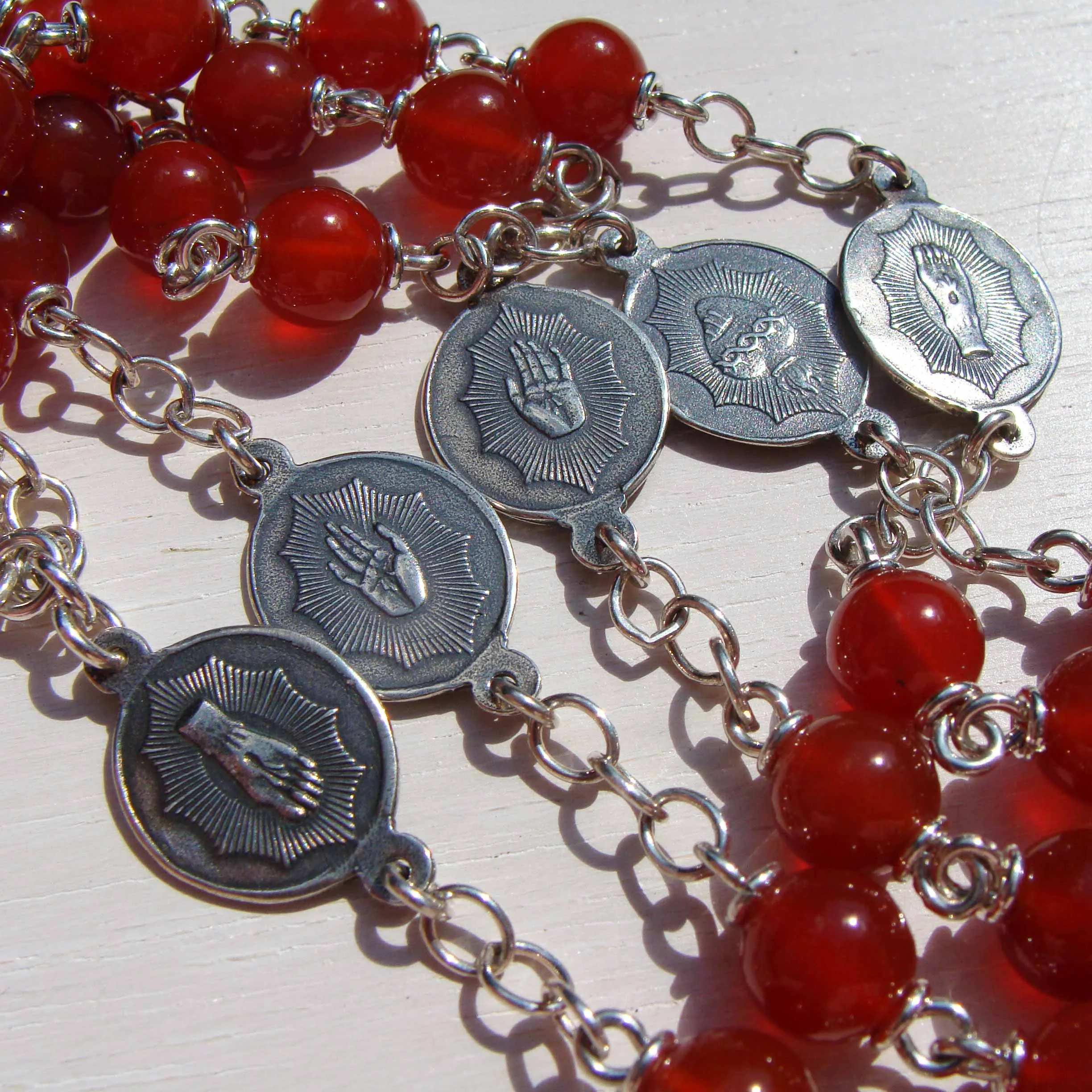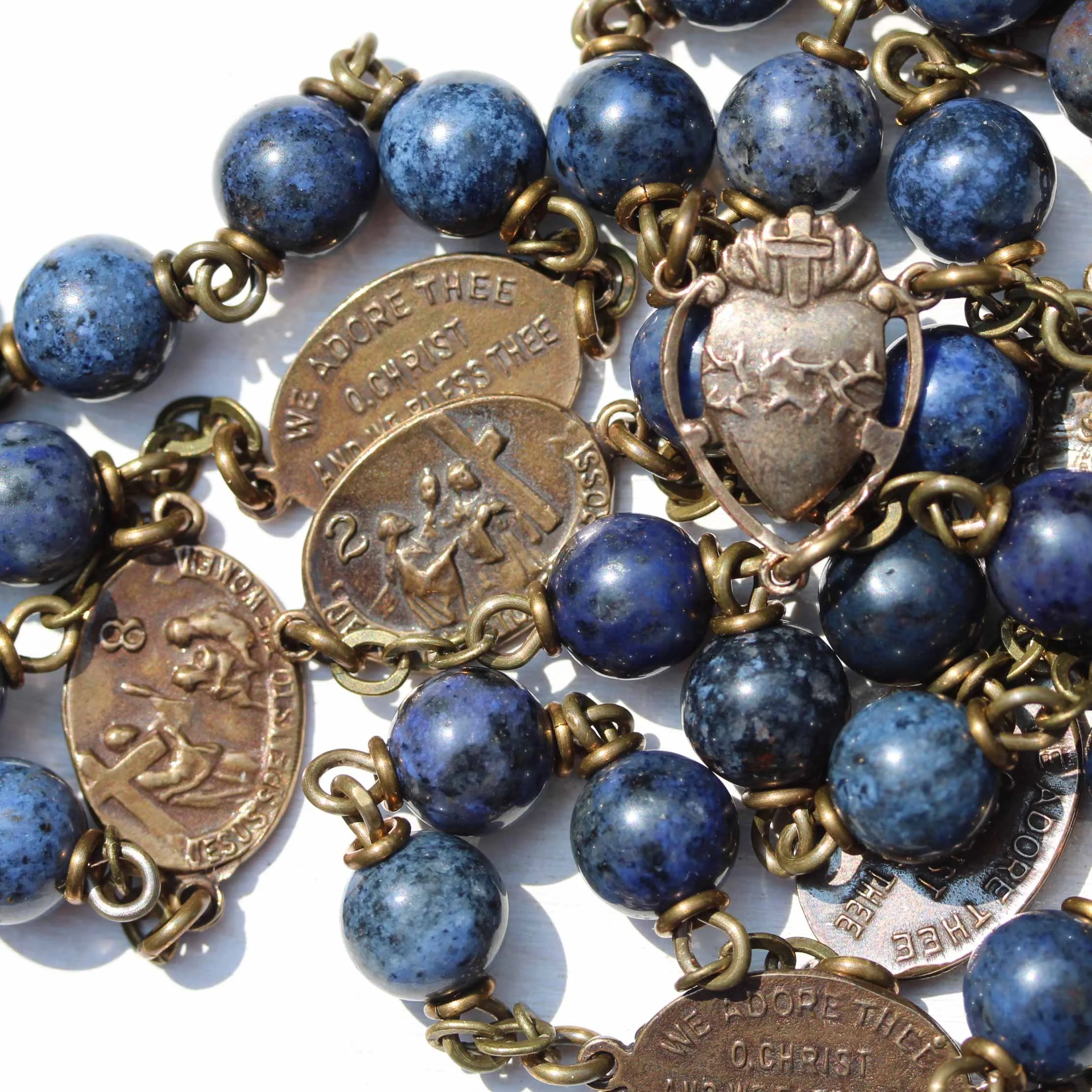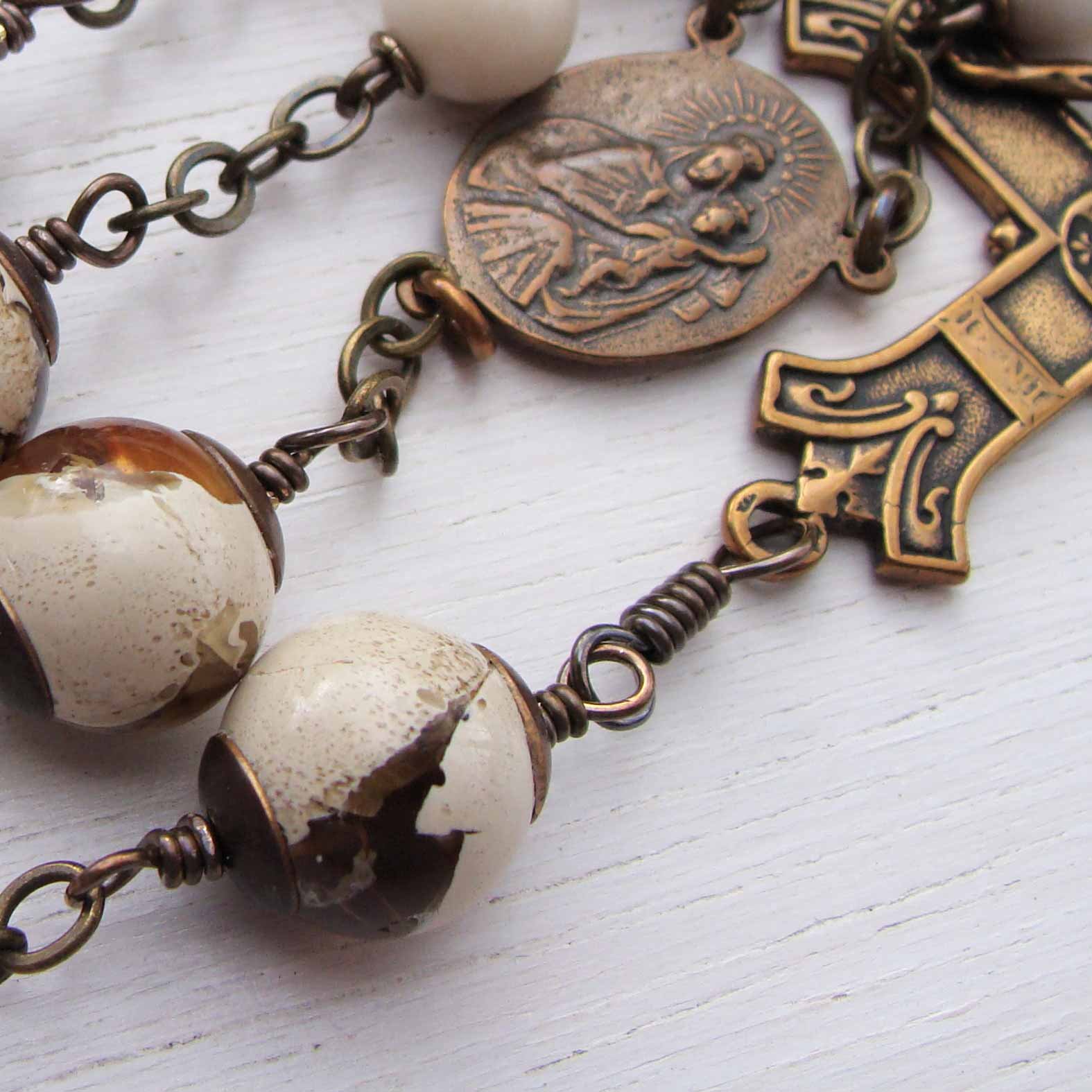Materials and Sizing: Findings
As a new rosary maker, you may be surprised to discover that one of the most challenging aspects of rosary design is figuring out chain and bead cap styles and sizes appropriate for the beads you've chosen. This page is a basic guide to selecting chain, embellishments and metal station links for your various rosary and jewelry projects.
Bead Cap Styles
Embellishing your rosary with bead caps adds style and charm to your finished piece. You may choose to cap all of the beads of your rosary, or just the Our Father beads in order to set them apart from the decade beads.
Some note is taken here of caps with rims and caps without rims. This style feature is important when deciding upon a simple loop with ring capped construction method or a wire wrapped method. More info on that coming in the following pages on wiring techniques.
Saucer shape with no rim
This style of cap is wide and shallow, and the edge of the hole is flush with the top surface of the cap. The rimless cap style is good if you would like to add a ring cap above the bead cap in simple loop construction. Saucer caps should be used with beads at least 2mm in diameter greater than the cap; 4mm or more with very flat caps. Saucer caps are nice on both round and rondelle beads. A great starter shape for you.
Saucer shape with a rim
This style of cap is wide and shallow with a rim of metal which finishes the hole. Rimmed caps do not allow for a ring cap to be placed above it in simple loop construction. Some caps have rims wide enough to accommodate a double thickness of your wire, so the rims function as "ring caps" by themselves. Some rimmed caps have very narrow rims, and call for a wire wrapped construction method.
Flared shape
Flared caps are a bridge between saucer caps and cup-shaped caps. Flared caps come in a huge variety of styles and metals, with and without rims. These are quite easy to fit on round beads of the same diameter or slightly larger. Their angular shape keeps round beads from looking bulky. Like saucer caps, flared caps are versatile, and look good on both round and rondelle beads.
Cup shaped caps with no rim
Cup shaped caps are high and round, and are often rigid, requiring their use on round beads of the same diameter as the cap. Cup shaped caps may have a circular, inner edge at their base which can make the cap stand off of the bead somewhat, and give a round bead a more oblong appearance. Cup caps are great for single-capping a bead to give it the look of a dangling acorn.
Cup shaped caps with a rim
Cup shaped caps with a decorative rim around the hole are good for a wire wrapped construction method. Some caps have rims wide enough for simple loop construction, but cup caps are often heavy, so you want to be sure that the rim will accept a double thickness of heavier gauges of wire (wire going out and doubling back in).
Cone shaped caps
Cone shaped caps are tall compared to the diameter of their bases. These will greatly elongate your Our Father bead. Cone shaped caps are often rigid, so you'll need to size them to the diameter of your bead. Try these as a single cap with a teardrop shaped bead for the look of a bell or budding flower. Two openwork cone caps might be used to fully encase a bead in metalwork.
Flexible caps
Flexible caps have deep cuts up from their bottom edge, allowing them to be pushed open to fit a wide variety of bead sizes. Flexible caps can have many original shapes, from saucers to cones. What's important is that they have thin enough walls for you to manipulate (flatten) them onto beads larger than the cap's diameter. Some flexible shapes can only be flattened 1 or 2 millimeters larger; others can be pressed onto much larger beads, as shown with a 7mm cone shaped filigree cap on a 10mm bead (photo on the left). Lightweight filigree flexible caps be pressed in half to embellish fat coin and oblong Our Father beads. Flexible cone shaped caps are great on the ends of fat rice (olive shaped) beads.
Selecting Rosary Chain
In a chained bead rosary, where the construction metal shows in the final product, a means to separate the decades and Our Father beads is required. This usually comes in the form of metal chain links or bowtie wire wraps. Here we will cover some of the various shapes of chain and how to size them for rosaries.
Chain Shapes
Below, you please find photos of four shapes of chain which you might consider for your pieces: cable, rolo, curb and long and short.
Cable chains are made with full round, full square or flattened round wire, where each link is perpendicular to the previous link. Cable chain styles are plentiful, and these will probably make up the largest variety in your stock.
In curb chains each link has a slight twist to it. This twist is hard to deform, so curb chains are excellent for use where the chain is going to be handled, such as in rosaries. Open link curb chains, where the links are not soldered closed, can be very difficult to open and close without mauling the shape of the links.
Rolo (also called Belcher) chains are made with half-round wire links that have a "D" shape or flattened "D" shaped wire links. The links themselves may be round or oval in shape. Rolo chains feel very nice in hand, and they're strong as well.
Long and short chains have a long link plus one or more small links in various configurations. There are long and short curb chains (figaro chains), cable chains and rolo chains, and sometimes a mix of link shapes. It can be difficult to find a supplier for appropriately sized long and short chains, as they're often too small or too large or not sturdy enough. Long and short chains can be very pretty, though, when you hit on the right one.
Chain Sizes
Chain is available in a multitude of sizes, but not all are really suitable for chained rosaries. For rosary chain, you need to be aware of four elements: the gauge of the wire used to form the links, the length of each link, the width of each link and whether the links are open or soldered closed.
To function correctly, rosary chain needs to have adequate space inside the individual links to accept your beading wire and any jump ring connectors. This insures that you can attach the chain to the decades and Our Father beads, and securely attach your crucifix and rosary center. Below, please find some size parameters for each of the four main shapes of rosary chain.
For cable chain: 3.5mm x 4.5mm is an excellent size, and can be used for 6mm, 7mm and 8mm bead rosaries.
For curb chain: 3mm up to 4.5mm.
The smaller your beads, the lighter weight your chain can be. Generally, try to find chain with links created with a minimum of 22ga (0.64mm or .025 inch) wire for smaller beads. For heavier and larger beads, links formed with 21ga to 20ga wire or flattened wire in these gauges work nicely. There's no need to go overboard with 18ga links, especially in the minimal sizes. While this is an option, heavy chain will come forward visually in your rosary design, and this isn't always desirable.
Also bear in mind that you have to attach a rosary center and crucifix. If you choose a chain that's too small and can't fit a heavier gauge jump ring attachment you might get a little frustrated at the end. In this case you’ll need to use wire wrapped bowtie connections.
Stations Medals
In jewelry and rosary work, a station is a metal link with 2 or 3 loops to connect different elements of a piece. When they are decorated or engraved, they can be a way to guide prayers, as in the Seven Sorrows, Five Holy Wounds and Stations of the Cross chaplets. If you have an engraved station, you don’t have to memorize the order of prayers with these chaplets, as the station lets you know the meditation.
Stations links or 2-hole connectors, when properly sized, can also replace chain to connect a series of beads in a very secure way. Often, antique rosaries where a link is used instead of chain before and after a decade, fetch high prices. These should be slim and fairly long.
A station may also be used to replace an Our Father bead for Hail Mary beads with a challenging color to match or an odd shape. In the photo to the left, the dove link, cross link and round rose link are appropriate as Our Father beads.
Above are three examples of chaplets using stations (2-hole connectors) which have been engraved by a medallist for use in Catholic chaplets. They are Seven Sorrows, 5 Holy Wounds and Stations of the cross. The last photo shows a bowtie wrap, which is a type of 2-hole connector which you create with wire wrapping. Please find directions for creating bowtie wraps in the Wiring: Wire Wrapping page of this Construction section.

